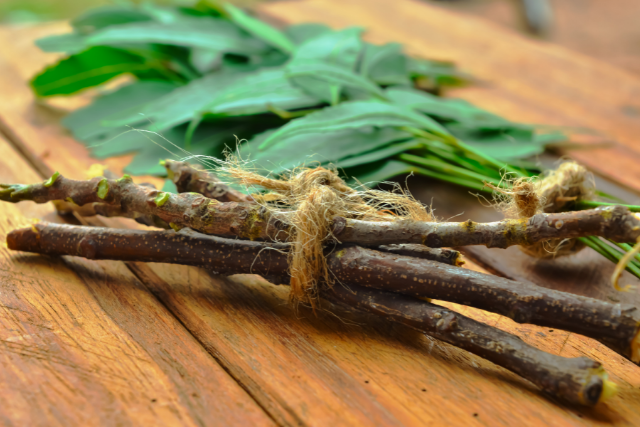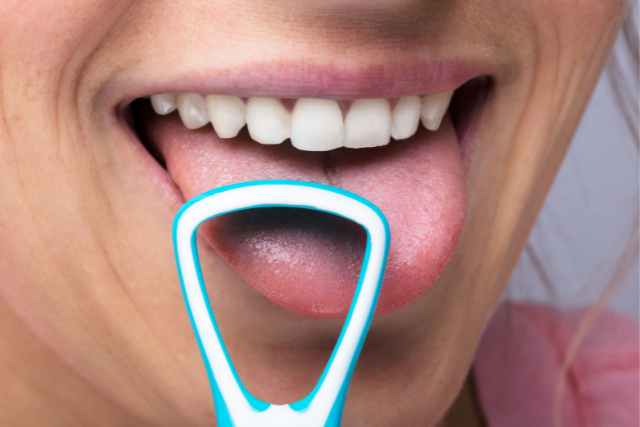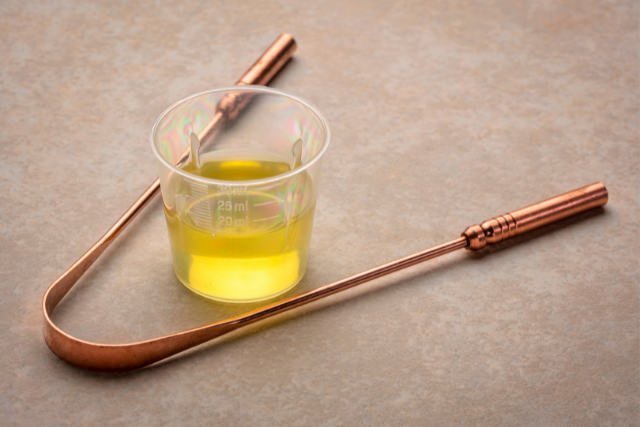The Ayurvedic Way for Oral Hygiene
Long before shiny toothpaste advertised to make your teeth white and strong existed, before all the electrical toothbrushes existed, and before the mouthwashes you religiously use twice a day existed – there existed a natural herbal approach to oral hygiene. A system that not only treated your teeth such that they shine bright, but so they function with optimal strength, and your mouth never has bad breath. That’s right, we’re talking about the ancient oral hygiene approach of Ayurveda.
While dental hygiene was not particularly Ayurveda’s specialty, we must admit, they had a lot of things quite right. Modern research has been done on Ayurvedic practices of oral hygiene, and they have proved to be effective. This blog discusses all the Ayurvedic ways of oral hygiene, starting from a sort of familiar usage of twigs as toothpaste and toothbrush, and then diving into little-known practices like oil pulling and tongue scraping. Read on!
Why Were Twigs Used as Toothbrush and Toothpaste?

You may be aware of the infamous dantoon, where one uses the twigs of certain plants to clean their teeth as a substitute for toothbrushes and toothpaste. Indeed, a long time ago, this was how human beings practiced oral hygiene in many parts of the world. Ayurveda believes in the concept of holistic wellbeing through the prevention of disease enabled by Dinacharya (the ideal lifestyle). Part of this ideal lifestyle includes everything we are talking about at this moment.
Dantadhvana (tooth cleansing) was one of the essentials included in Ayurvedic Dinacharya. This process of tooth cleansing was enabled by Dantakashthas, which we would today understand as twigs of various plants, dantoons, or chewing sticks. Ayurveda recommends cleaning teeth with a chewing stick in the morning, as well as after every meal one consumes. If you read up on the Indian history of toothbrushes, you will find that Dantadhvana was essential to do before one prays.
The obvious reason why twigs were used instead of toothbrushes and toothpaste is that at that time, these products simply did not exist. But you may be surprised to find that using twigs for cleaning teeth was a very effective tool to remove plaque from teeth, levelling of biting surfaces on the teeth, and facilitating salivary secretion.
Most of these tree stems had good antibacterial properties enabling them to cleanse your mouth. Chewing sticks (as they are more commonly called today), typically are about 15 centimeters long, and about the width of your little finger. When you chew on twigs, you end up extracting their natural juices, which act as toothpaste in your mouth. As for their role as a toothbrush, their stick structure enables them to be useful. In fact, many times, the rear end of a Dantakashtha was used as a toothpick.
How To Select a Twig for Brushing?
There is no single tree that was universally used by humans to clean their teeth. Even within Ayurveda, many people used stems from different trees. Going by the philosophy of this ancient healthcare system, what stems you used were determined by the dosha imbalance you had. As a general rule, stems used as dantakashthas were bitter, pungent, or astringent in taste. Some examples of the plants used for this purpose include Neem, Babul, Gular, Mango, Peepal, and so on. To select a twig for brushing yourself, it would be wise to first understand the issues your teeth have, and then explore the options available to you.
- Bitter stems, such as those from the trees of Neem and Arjuna, contain antibacterial properties that are good for maintaining cleanliness. This is suitable for those with the Pitta Dosha. By cleaning your mouth using these twigs, you get rid of bad breath and experience an enhanced sense of taste. Neem twigs are the most popular Dantkashtha on this date. If you buy Dantoon from any herbal markets, they are likely to be neem twigs.
- According to Ayurveda, herbs that have a pungent flavor help to increase salivation in your mouth, which is suitable for those with Kapha Dosha. This enables better chewing and digestion of food, preventing chances of a stomach ache or poor bowel movement. Further, the increase in saliva enables your mouth to get rid of the toxins that may enter it. Fever nut and the common milkweed are two stems that are pungent tasting.
- Finally, Astringent stems, like Khadira and Licorice, are healing and regenerative. They strengthen your gums and make your teeth stronger. If you have any mouth ulcers or sores, these herbs can improve the healing process and provide some soothing. Astringent tasting herbs also aid in dealing with bad breath. This is suitable for people with Vata dosha imbalance.
How To Use a Twig to Brush Your Teeth?

Now that you know how to select a suitable twig for your dental hygiene, there is only one little step to follow – knowing how to use these twigs on your teeth. While chewing sticks are beneficial when used properly, they may cause harm if you use them incorrectly, hurting your gums and possibly damaging your teeth. Here are some easy steps to follow once you find your favorite twig-toothbrush: –
- Twigs aren’t supposed to be too thick, but certain plants might have thicker stems. If this is the case, wet one side of your twig with water or rosewater. If the twig you are using is soft enough, this step can be skipped.
- Make sure the twig is clean enough. Now chew the side of the stem you have wet until it is crushed up and soft enough to make a brush.
- There you go! Use the soft side of the twig to brush your teeth as you do with regular brushes. Move the twig up and down towards the front of your teeth, and be thorough.
- Use the other side of the twig to get to places where food residues and bacteria may be stuck. Brush thoroughly again using the softer side.
- Finally, after a thorough brushing, rinse your mouth to get rid of any stem residues in your mouth. Do not ingest. The bacteria in your mouth need to go out.
Tongue Scraping – A Necessity?

Not many are aware of the essentiality of cleaning your tongue every day, but we can assure you it might change your life. Dirt, bacteria, and food residues can stick to your tongue, making your breath smell foul. Ayurvedic philosophy states that when you are asleep, your body is at a resting state. During this time, toxins (called ama) begin to accumulate as the body processes everything that was consumed that day. These are visible as a coating on the tongue, white, yellow, or brown in color. A pink tongue indicates good oral hygiene.
While brushing and mouth washing are also ways in which you can clean your tongue, Ayurveda recommends cleaning your tongue by scraping it with a U-shaped tool, made of metals such as copper, silver, or gold. These should not be too sharp, but sharp enough to get the dirt and cough off your tongue. This process is called tongue scraping, or in Ayurvedic terms, jihwa prakshalana. To elaborate more, here are some benefits of tongue scraping:
Enhanced Sense of Taste
When you scrape your tongue, the top layer of it is gone, thereby letting your tastebuds get a sense of your food without layers of bacteria in between. Additionally, scraping your tongue stimulates your tastebuds, enhancing their function.
Goodbye, Bad Breath
When you’re asleep, your salivary glands produce less saliva than usual. This lets bacteria thrive in your mouth, causing the horrible morning breath we all hate. Tongue scraping embellishes your oral hygiene process and scrapes off bacteria in ways that mouth washing and brushing your tongue do not. This leaves you with fresh, stench-free breath every day.
Improves Digestion
When you ingest food, the sensory receptors on your tongue signal your brain to activate essential enzymes required for proper digestion. However, ama on your tongue obstructs this pathway with its mucus layer, affecting your digestion. Scraping ensures that this is avoided and your taste buds work optimally. This leads to smooth digestion without any discomfort.
Improves Immunity
Ayurveda believes in the interconnectedness of various body parts, which means your tongue health is also representative of your overall health. With the gradual accumulation of mucus and bacteria on your tongue, each time you eat something, you swallow some Ama along with it. The tongue is the first body part that comes in contact with outside food and cleaning ensures that these impurities do not cause trouble for your physiology. Therefore, scraping your tongue ensures an improved immunity.
Oil Pulling – The Ancient Mouth Wash Technique
Yes, you read that right. Before minty mouthwashes with lots of sulfuric acids existed, there was oil pulling. Oil pulling is an ancient practice used to keep one’s mouth clean. In addition to cleanliness, it has been widely used as a traditional Indian folk medicine to prevent decay, oral odour, bleeding gums, throat dryness, cracked lips, and to strengthen teeth, gums, and the jaw.

What Is Oil Pulling?
Oil pulling (called Kaval or Gandusha in Ayurveda) refers to rinsing your mouth with oil. This is done by putting a tablespoon of your preferred oil in your mouth and letting it rinse your mouth for around 15-20 minutes. We know that sounds like a lot of time, but it is essential to do so, so that the oil targets and cleans all hardened impurities in your teeth and gums. Ayurveda recommended that one practices oil pulling every morning right after waking up to get rid of accumulated ama during the night. This is followed by massaging your gums, tongue scraping, and finally brushing with twigs.
Often, sesame oil is used to practice oil pulling. It has many anti-bacterial properties and gets rid of plaque-causing bacteria in your mouth. Other oils used in oil pulling include the infamous coconut oil and sunflower oil. All of these oils are abundant in nutrients that strengthen your teeth and gums.
Oil Pulling and Massaging Gums
Massaging gums and teeth is an additional practice done right after you put oil in your mouth. To optimize the benefits of nutritious oil, one is recommended to effectively massage the oil on your teeth and gums. This strengthens your teeth, gums, and even jaw – improving blood circulation in your mouth by effectively pressing on the muscles. Ayurveda recommends doing this every morning right after you wake up, followed by keeping the oil in your mouth for about 15 minutes. This entire process is followed by tongue scraping and then brushing.
The benefits of oil pulling and massaging include: –
- Treatment of dry lips and face
- Preventing long term illnesses connected to ingestion of impurities and poor digestion
- Curing dryness of the throat
- Strengthening teeth and gums
- Treating mouth ulcers and cuts
However, while practicing oil pulling there are a few precautions you should be sure to take including: –
- Never swallow the oil you use for oil pulling.
- Make sure to brush your teeth well once you are done.
- Both of these precautions are subject to the fact that oil needs to be rinsed off from your mouth and discarded so you get rid of the impurities that stick to the oil.
To Sum Up
The ancient medicinal system of Ayurveda proves efficacy in many health issues, including maintaining oral health. If you are looking to improve your dental health, treat bad breath, and improve overall immunity, doing oral hygiene the Ayurveda way is the way to go.
Not only does Ayurveda use pure natural ingredients with zero harmful chemicals, but it is also better for the environment to ditch plastic toothbrushes and fancy toothpaste to maintain dental hygiene. We recommend looking no further and adopting toothbrush twigs, tongue scraping, and oil pulling as the nuanced yet traditional ways of taking care of your teeth.




